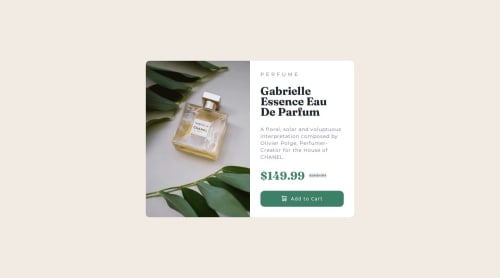Submitted over 1 year agoA solution to the Product preview card component challenge
Semantic HTML and CSS responsive product preview card component
@EJMK18

Solution retrospective
What are you most proud of, and what would you do differently next time?
I am proud of the steady improvement I have been making. I completed this challenge within 01h30m.
I would focus on creating reusable CSS custom variables for layouts to improve on my project completion time.
What specific areas of your project would you like help with?All feedback is welcomed.
Code
Loading...
Please log in to post a comment
Log in with GitHubCommunity feedback
No feedback yet. Be the first to give feedback on Evan Edmund Munnik's solution.
Join our Discord community
Join thousands of Frontend Mentor community members taking the challenges, sharing resources, helping each other, and chatting about all things front-end!
Join our Discord